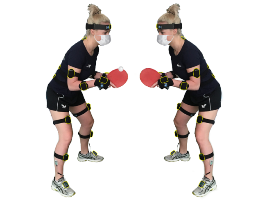New Insights into Motion Analysis
A special issue of Symmetry (ISSN 2073-8994). This special issue belongs to the section "Life Sciences".
Deadline for manuscript submissions: closed (31 January 2022) | Viewed by 42872

Special Issue Editors
Interests: biomechanics; movement analysis; sport science; physiotherapy; ergonomics
Special Issues, Collections and Topics in MDPI journals
Interests: physiotherapy; biomechanics; gait analysis
Special Issue Information
Dear Colleagues,
The symmetry of human movement is frequently understood as a perfect correspondence between the action of the limbs. A healthy adult's movement is usually symmetrical, which reduces energy costs and the risk of overloading the joints. In clinical practice, the evaluation of (a)symmetry, or more specifically, the degree of movement (a)symmetry, is achieved by assessing both the kinematic and kinetic parameters of movement. The determinants of locomotion are often used to assess the normality of movement in sports or rehabilitation process.
In this Special Issue, we welcome papers exploring and providing new insights into the (a)symmetry of human movements, especially during physical activity, sports or rehabilitation.
Submit your paper and select the Journal “Symmetry” and the Special Issue “New Insights into Motion Analysis” via: MDPI submission system. Our papers will be published on a rolling basis and we will be pleased to receive your submission once you have finished it.
Professor Slawomir Winiarski
Professor Katarzyna Kaczmarczyk
Professor Wanda Forczek-Karkosz
Guest Editors
Manuscript Submission Information
Manuscripts should be submitted online at www.mdpi.com by registering and logging in to this website. Once you are registered, click here to go to the submission form. Manuscripts can be submitted until the deadline. All submissions that pass pre-check are peer-reviewed. Accepted papers will be published continuously in the journal (as soon as accepted) and will be listed together on the special issue website. Research articles, review articles as well as short communications are invited. For planned papers, a title and short abstract (about 100 words) can be sent to the Editorial Office for announcement on this website.
Submitted manuscripts should not have been published previously, nor be under consideration for publication elsewhere (except conference proceedings papers). All manuscripts are thoroughly refereed through a single-blind peer-review process. A guide for authors and other relevant information for submission of manuscripts is available on the Instructions for Authors page. Symmetry is an international peer-reviewed open access monthly journal published by MDPI.
Please visit the Instructions for Authors page before submitting a manuscript. The Article Processing Charge (APC) for publication in this open access journal is 2400 CHF (Swiss Francs). Submitted papers should be well formatted and use good English. Authors may use MDPI's English editing service prior to publication or during author revisions.
Keywords
- Kinematics and kinetics of human movement
- Quality of movement
- Biomechanics
- Physical activity and sport
- Medicine and rehabilitation
- Medical signals (waveforms) analysis
- Ergonomics
- Sex-specific differences in movement patterns
- Numerical scores (Indices) or statistical methods
Benefits of Publishing in a Special Issue
- Ease of navigation: Grouping papers by topic helps scholars navigate broad scope journals more efficiently.
- Greater discoverability: Special Issues support the reach and impact of scientific research. Articles in Special Issues are more discoverable and cited more frequently.
- Expansion of research network: Special Issues facilitate connections among authors, fostering scientific collaborations.
- External promotion: Articles in Special Issues are often promoted through the journal's social media, increasing their visibility.
- Reprint: MDPI Books provides the opportunity to republish successful Special Issues in book format, both online and in print.
Further information on MDPI's Special Issue policies can be found here.







